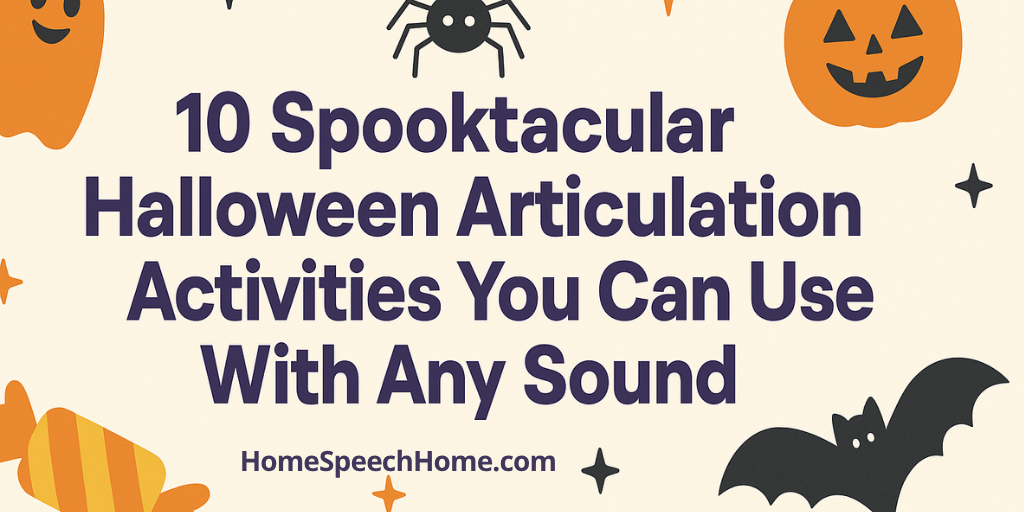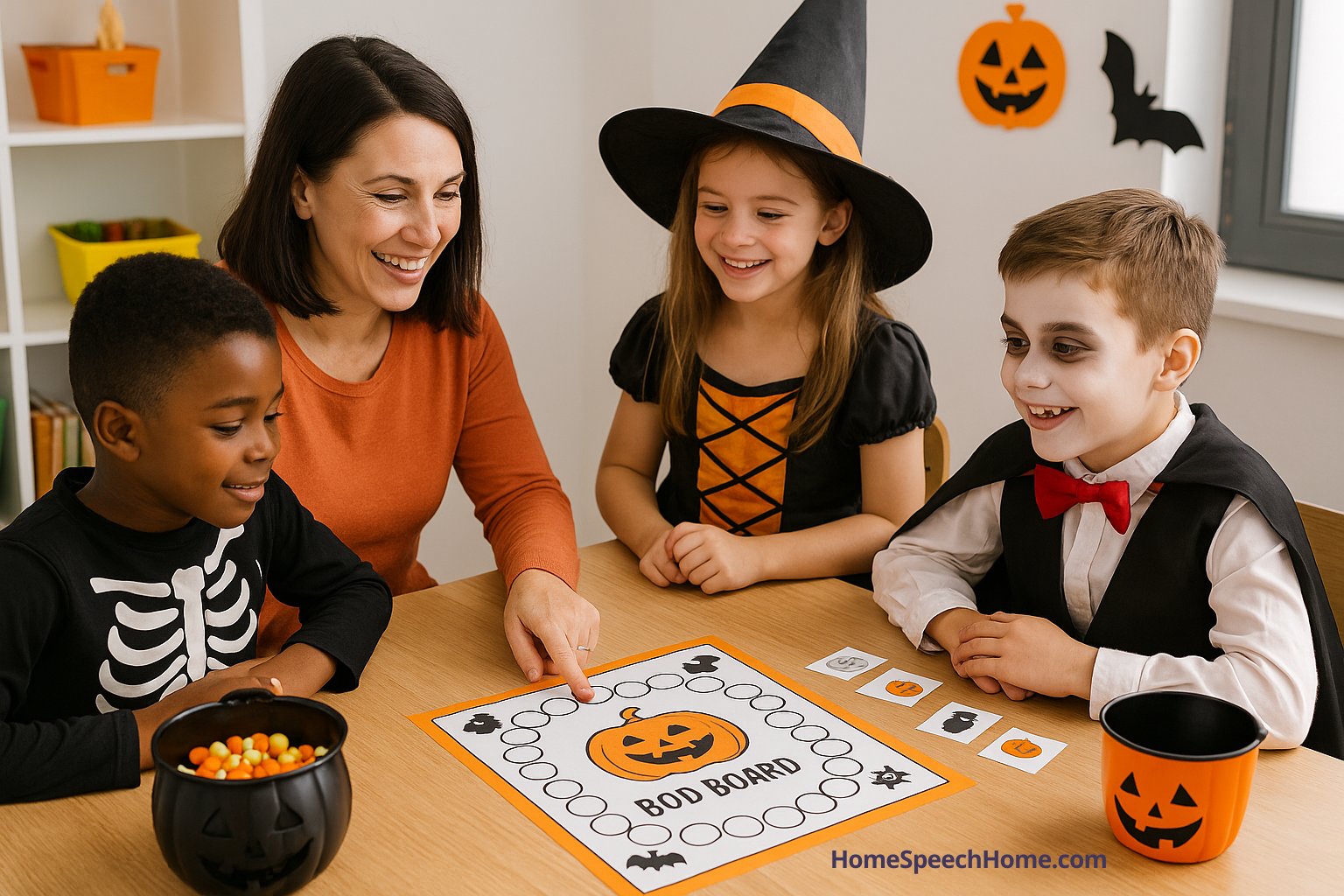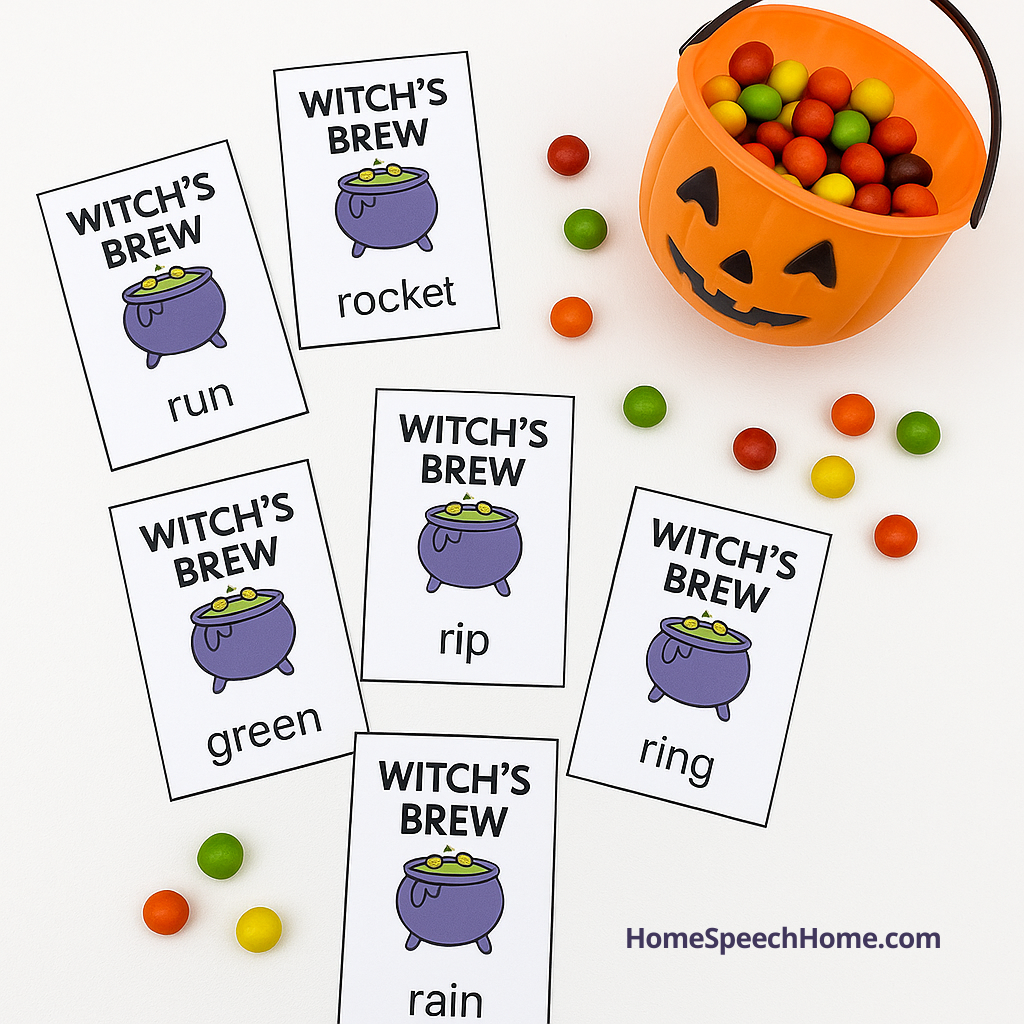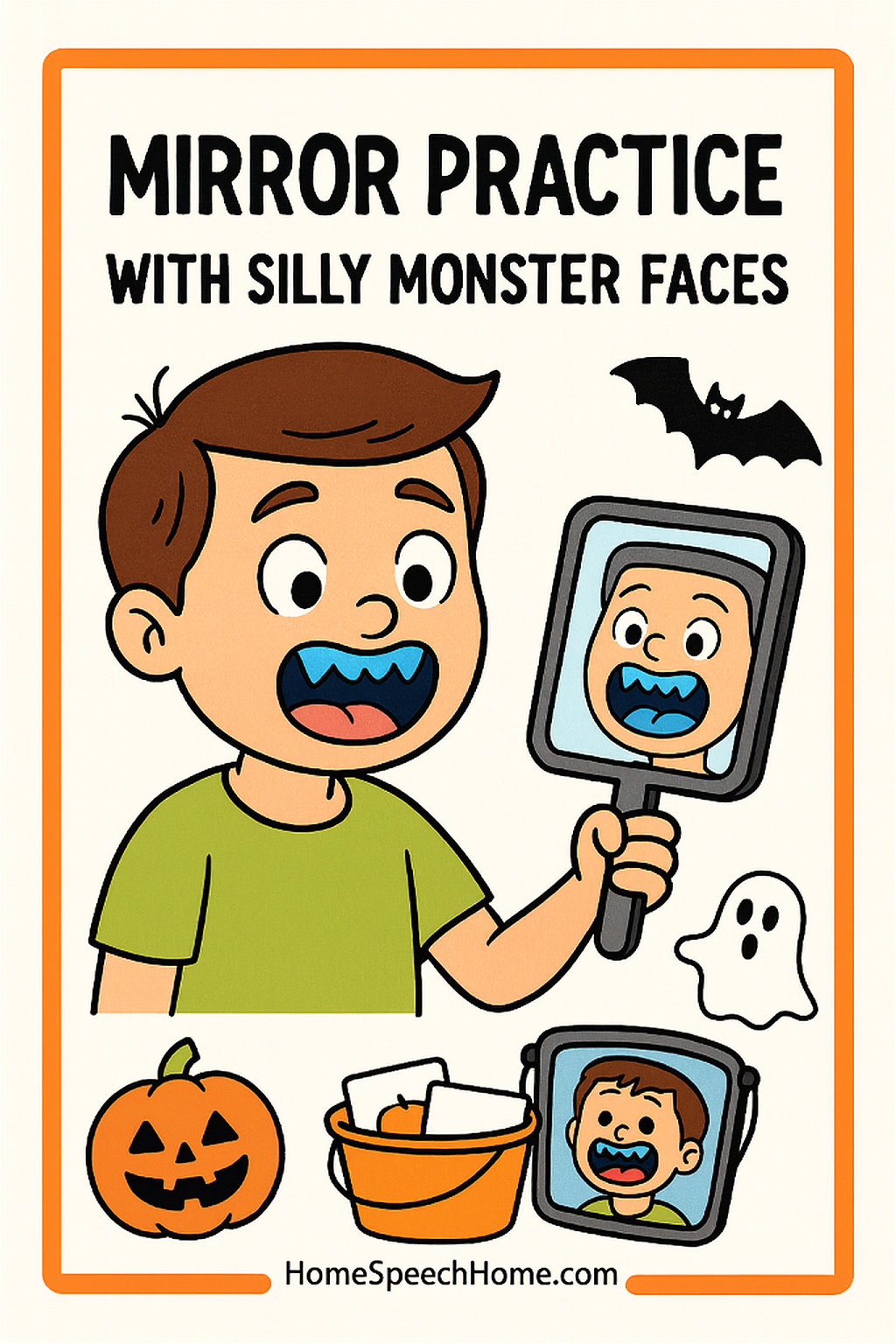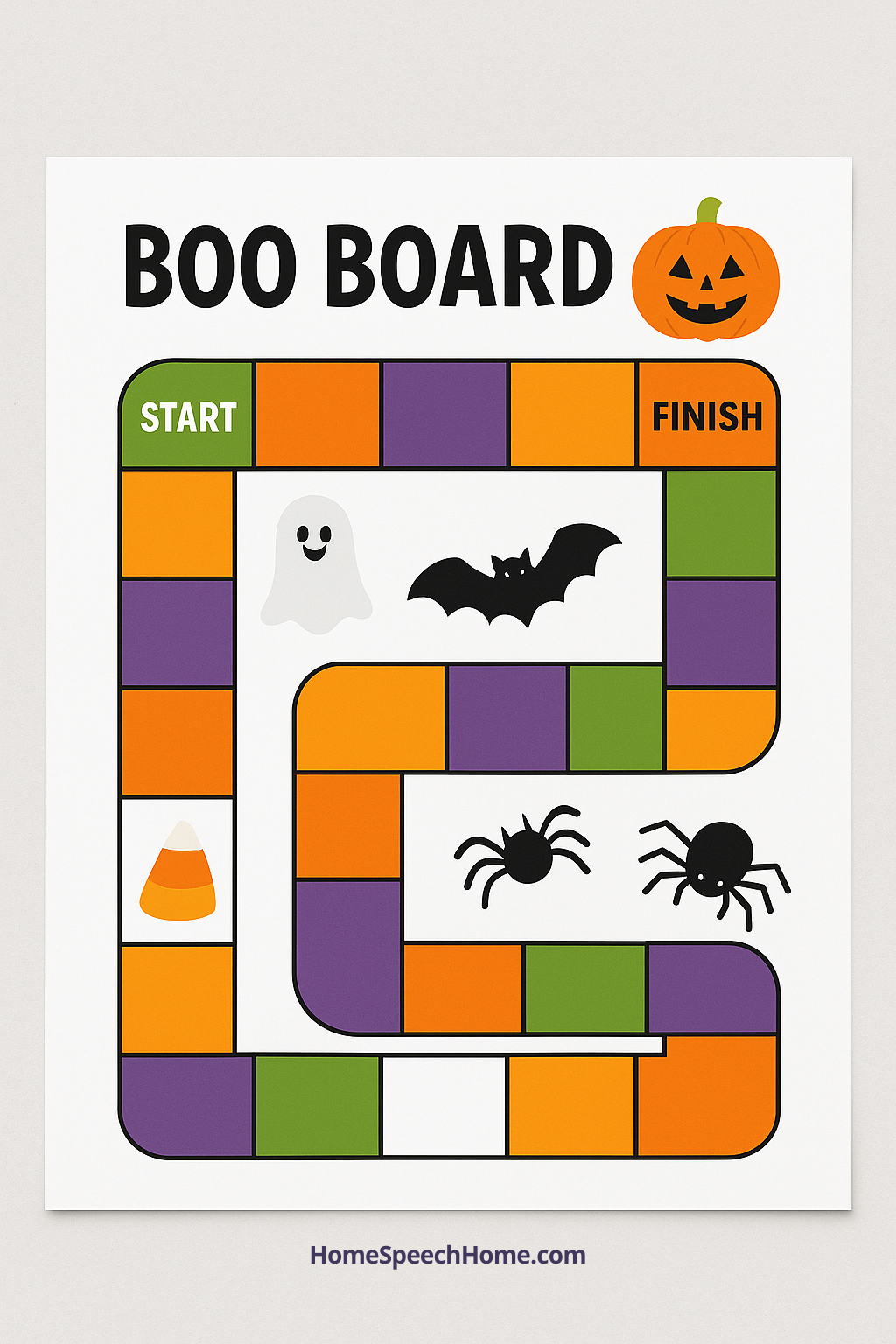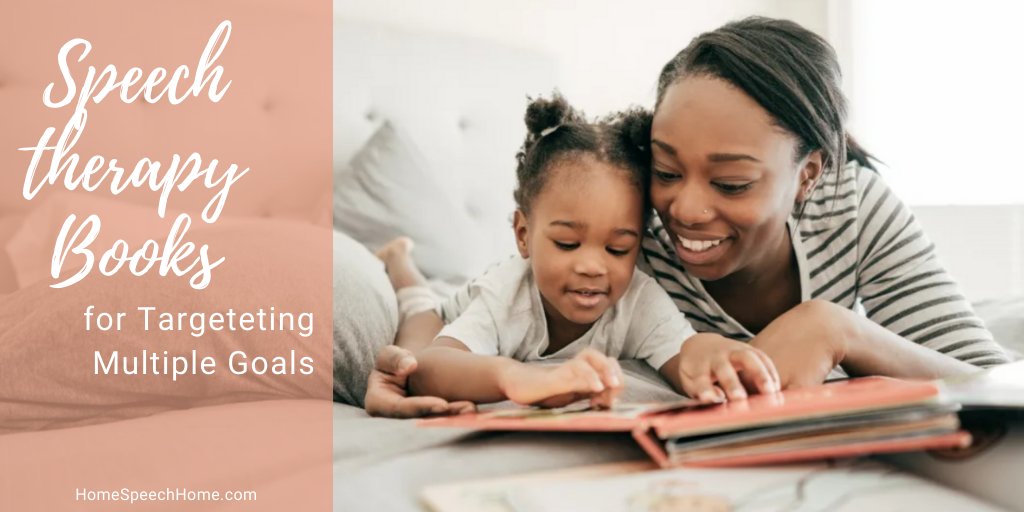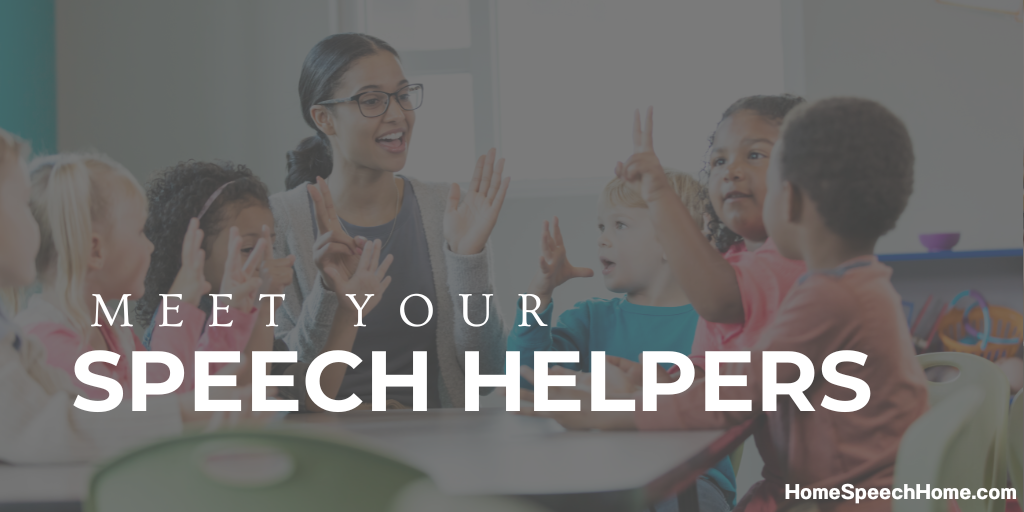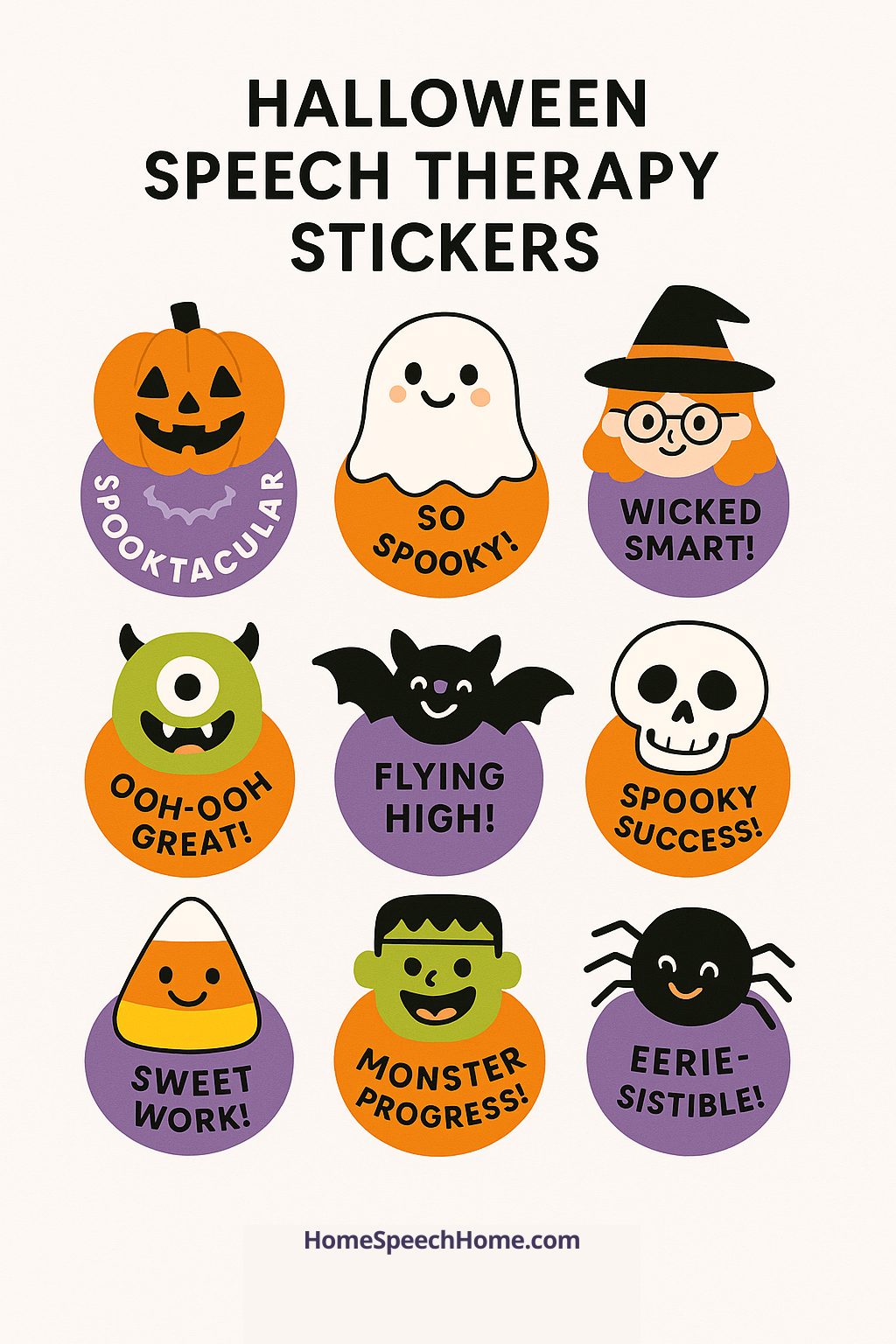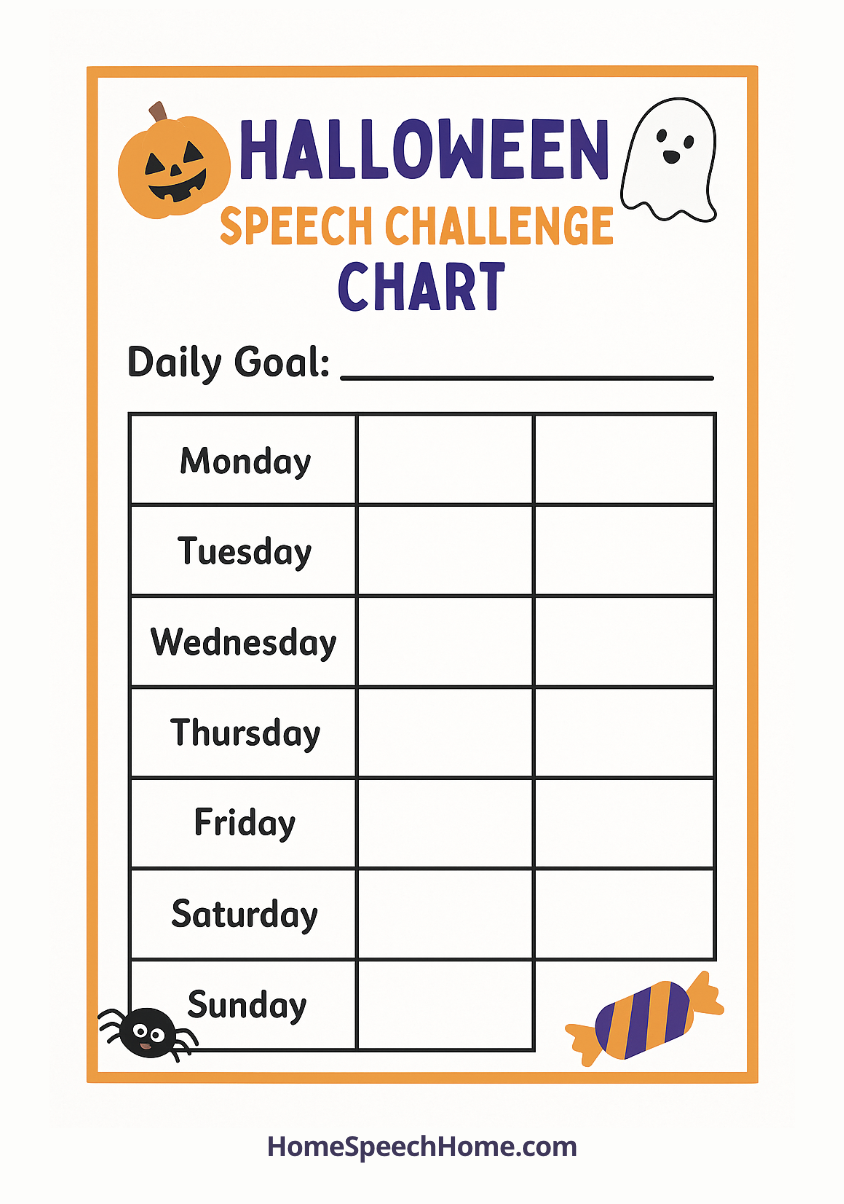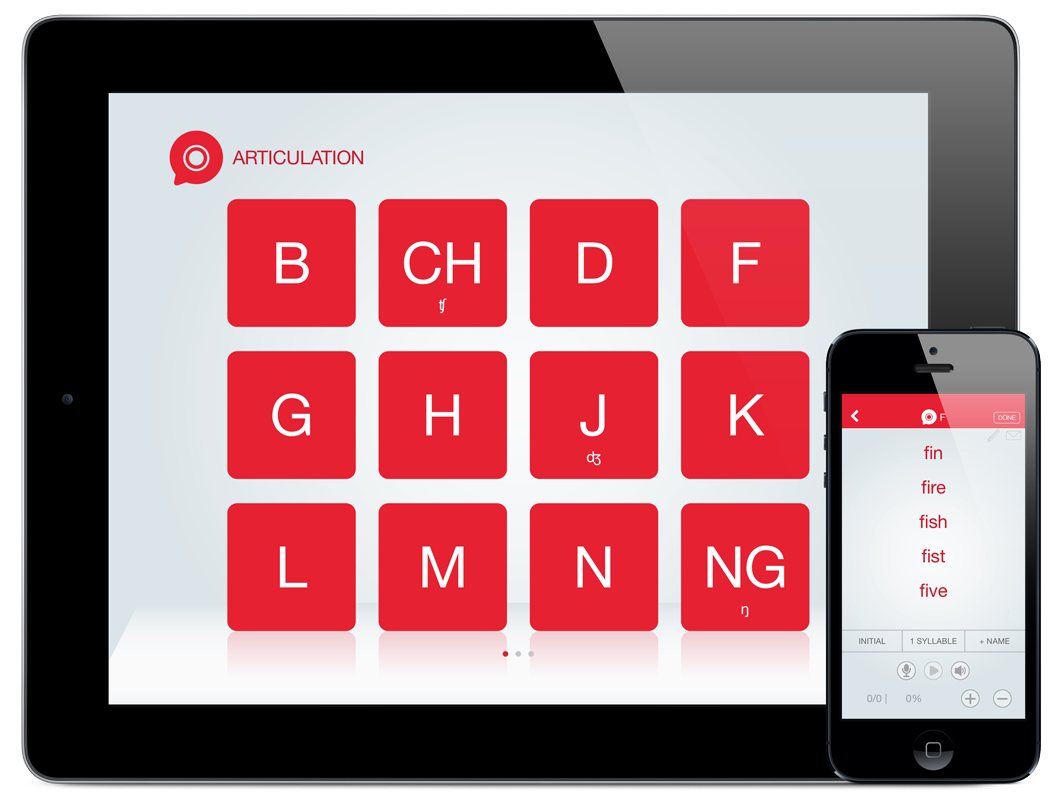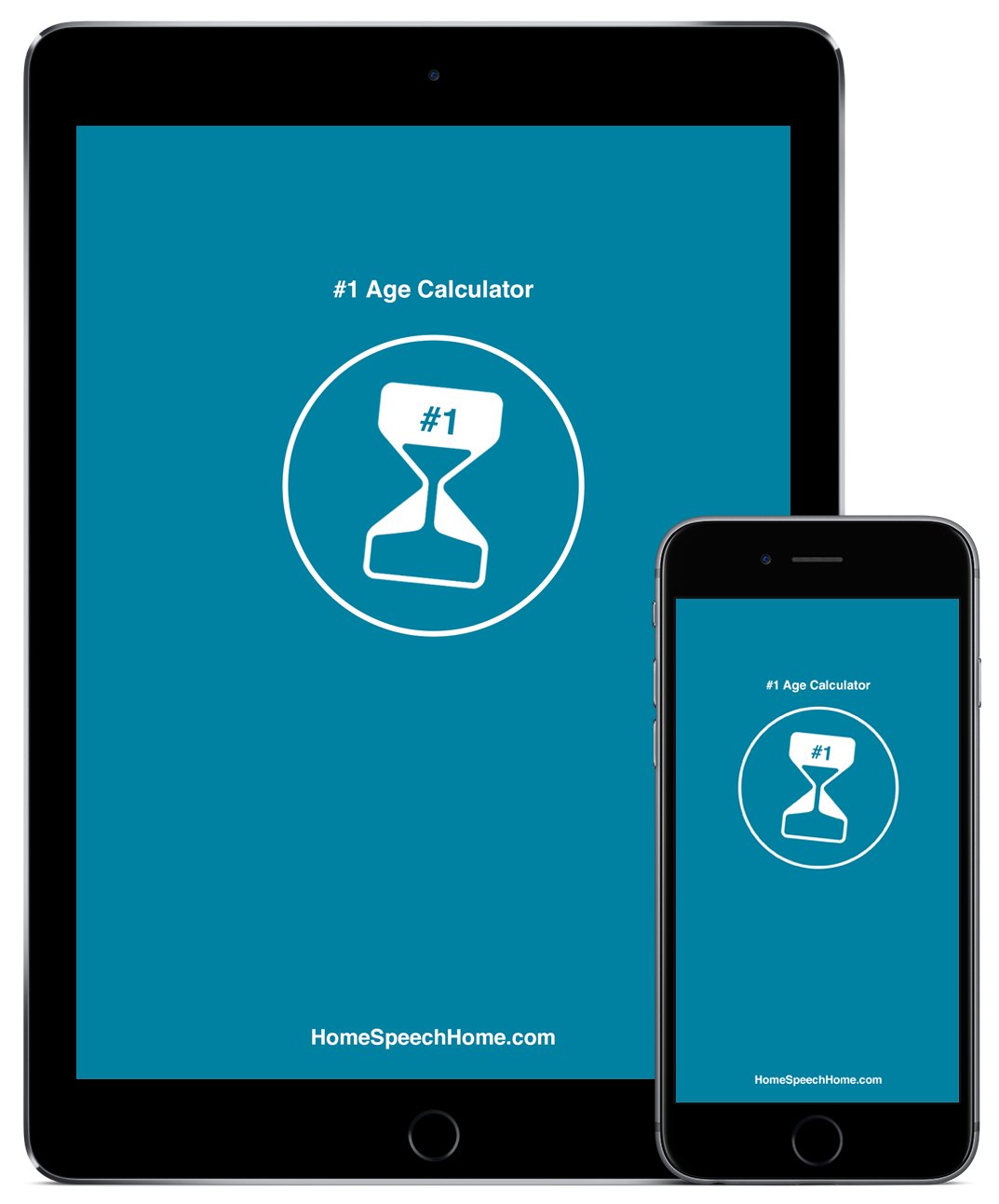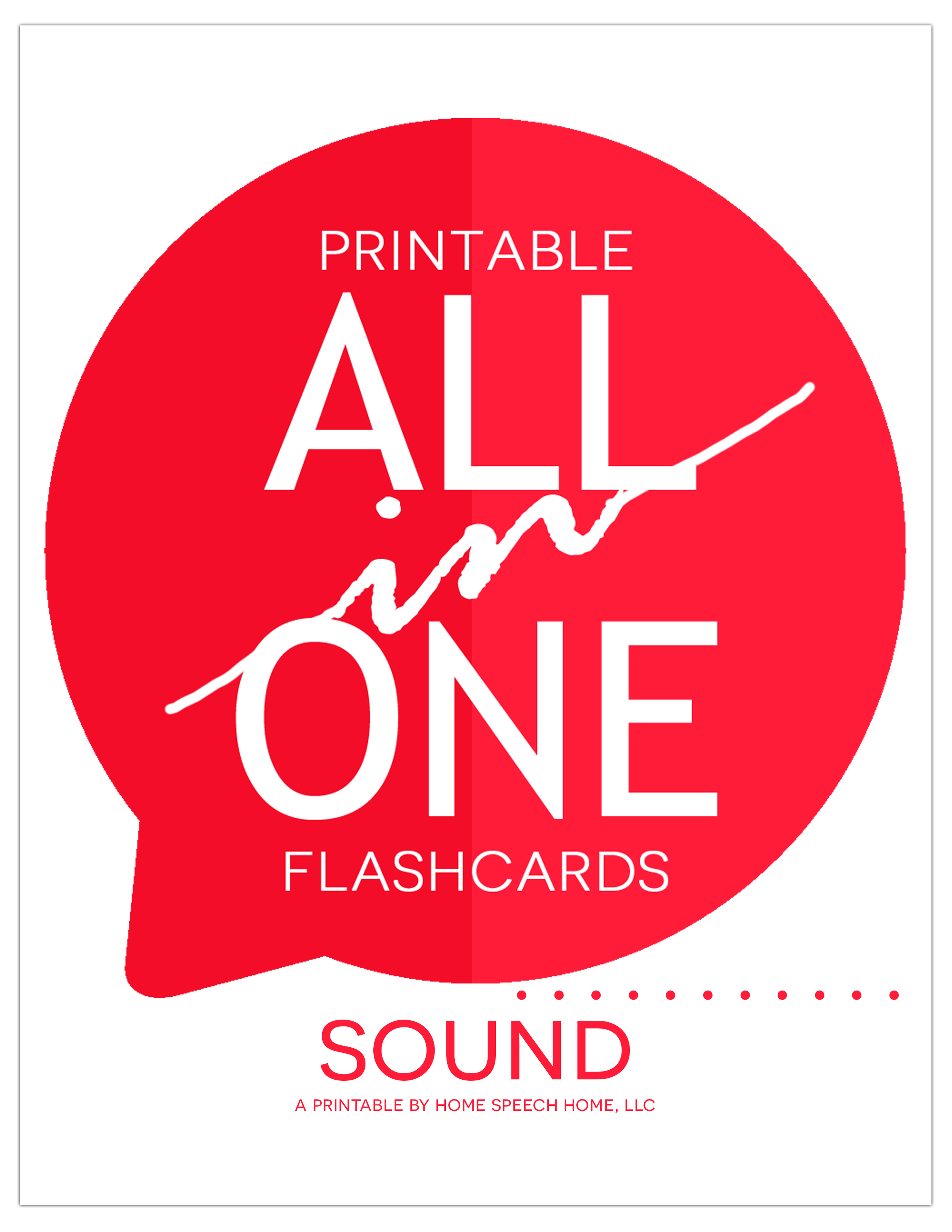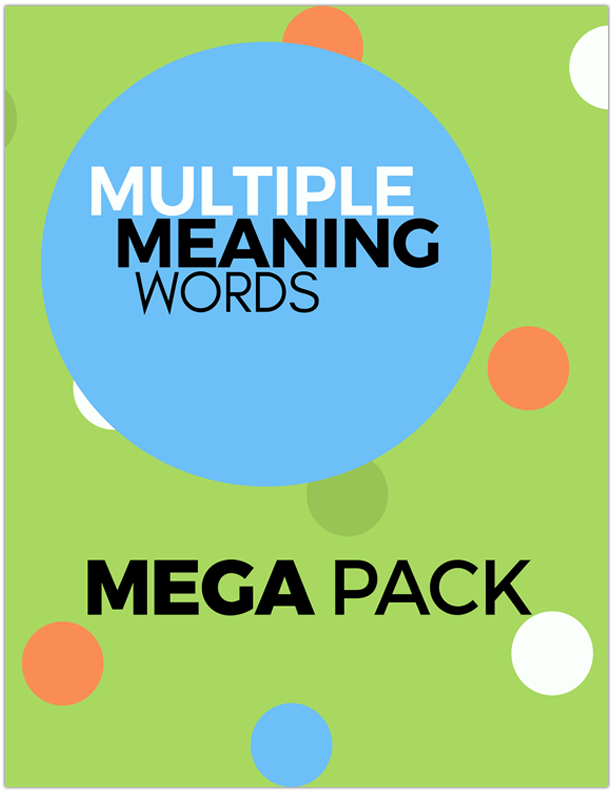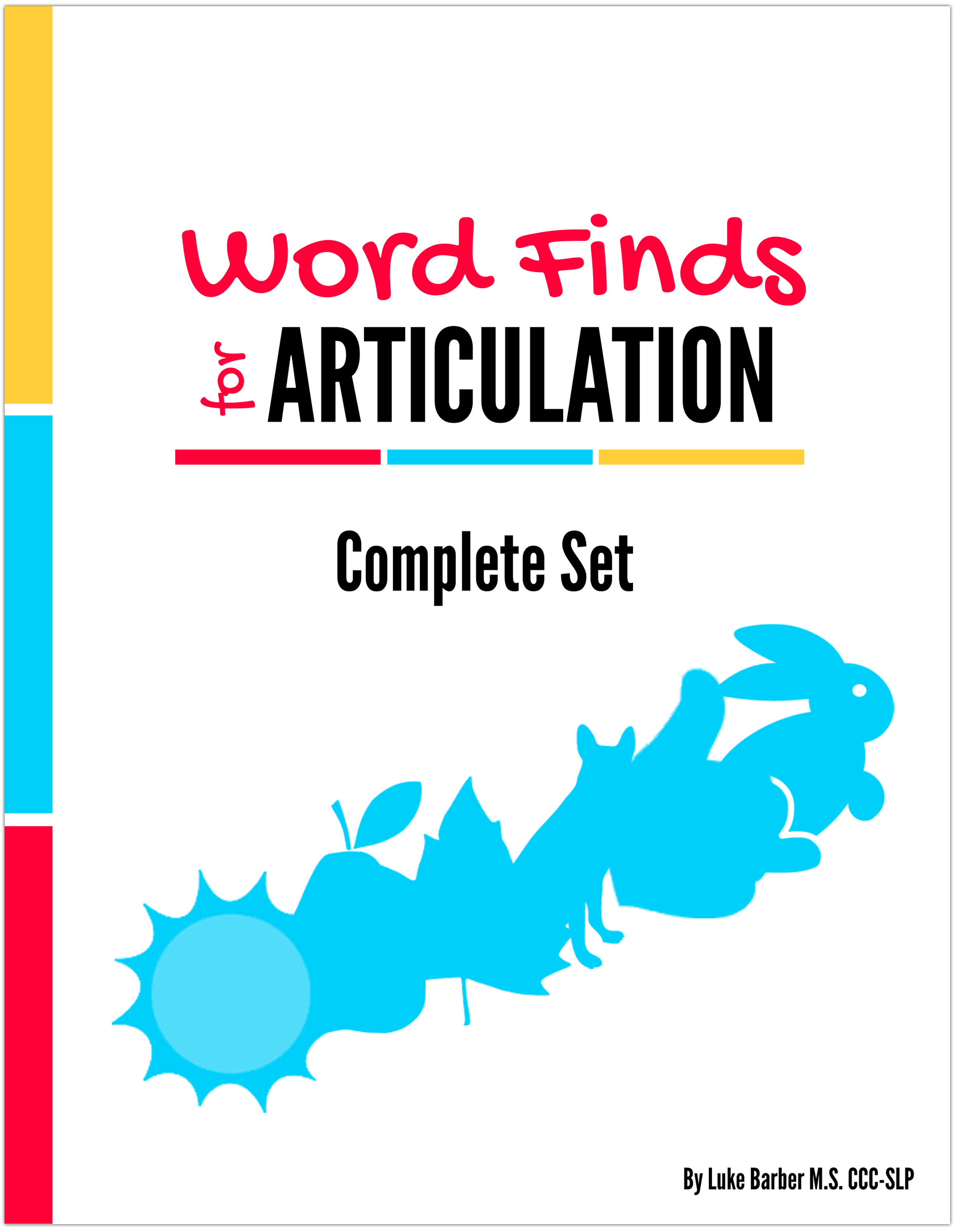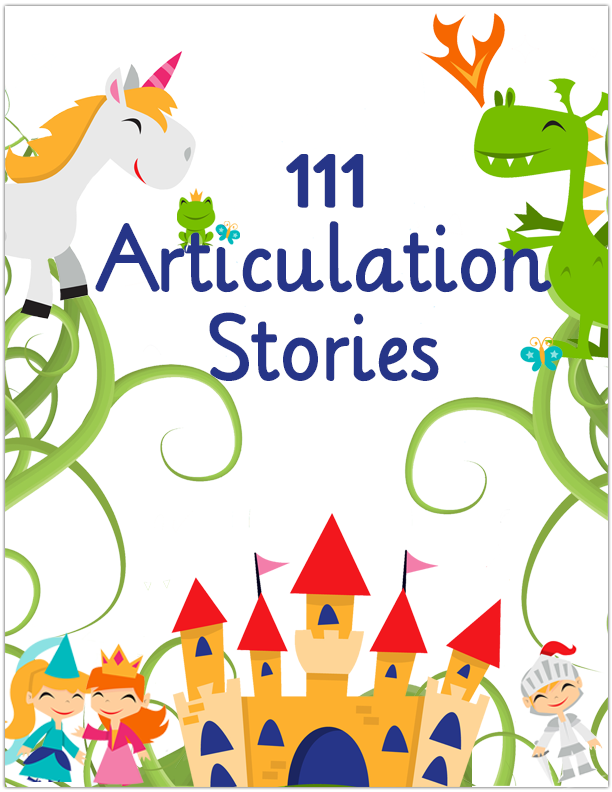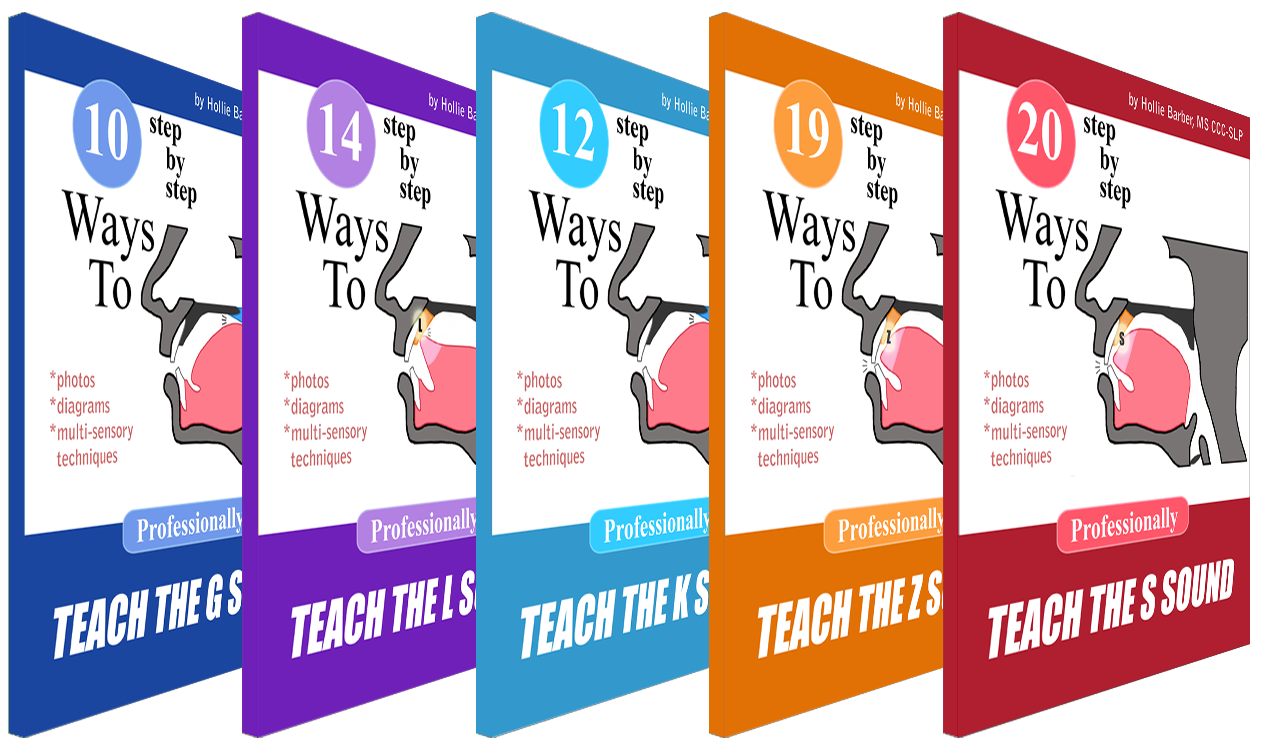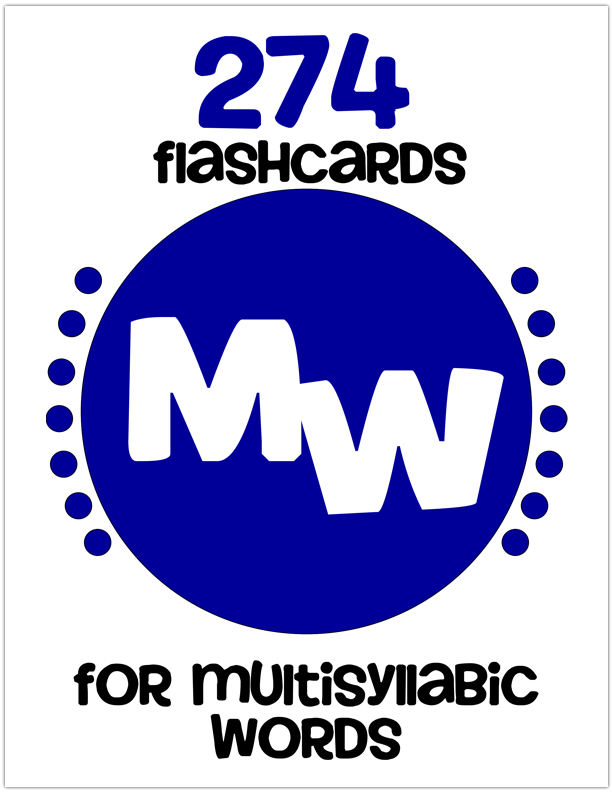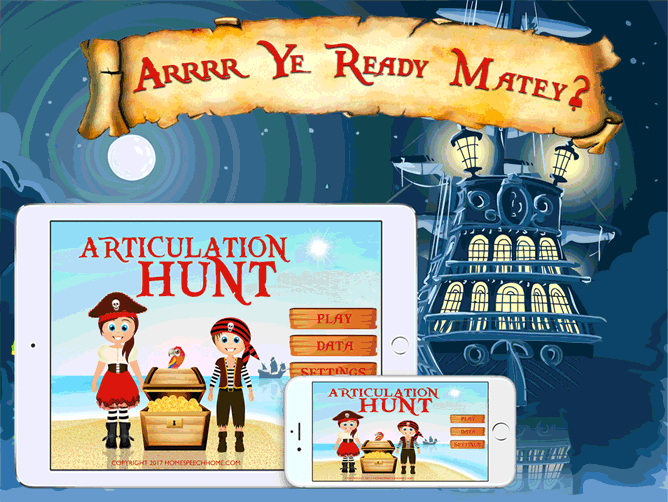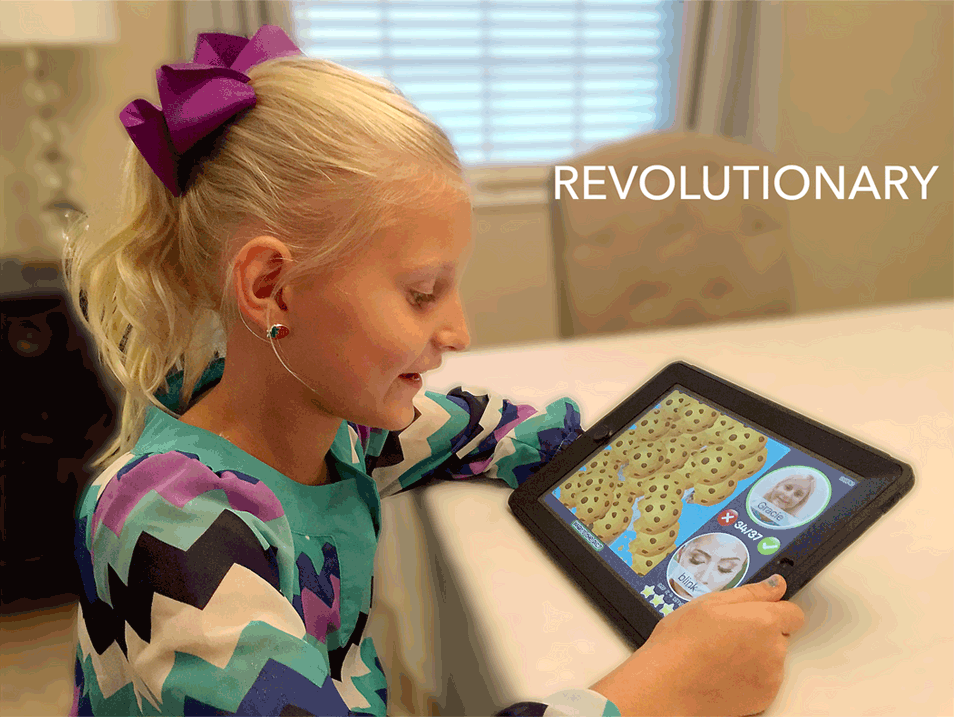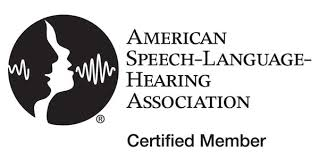10 Spooktacular Halloween Articulation Activities You Can Use With Any Sound
Halloween brings excitement, sugar highs, and a healthy dose of chaos to any school week. But for speech-language pathologists, it also offers something powerful — built-in engagement.
Kids are eager, imaginative, and ready to play, which makes it the perfect time to turn their energy into productive articulation practice.
Use these 10 detailed Halloween articulation activities with any sound target — low prep, flexible for groups or individuals, and full of laughter.
Let’s make this Halloween both spooky and speechy!
SEE ALSO: Crush Therapy Goals with the All in One Printable Flashcards
1. Trick-or-Treat Word Hunt
Objective:
To increase accuracy and automaticity of target sounds through movement-based repetition and play.
Materials Needed:
- Plastic pumpkins, paper bags, or candy buckets
- Printed articulation cards or HomeSpeechHome flashcards
- Optional: Halloween stickers or small prizes
Steps:
- Hide articulation word cards around the room inside pumpkins, envelopes, or taped to walls.
- Give each student a “trick-or-treat bag."
- When they find a card, they must say the word three times correctly before placing it in their bag.
- Once all cards are collected, review by having students use 3–5 of their words in Halloween-themed sentences.
Variations:
- For groups: Create “team hunts” and assign each team a sound (e.g., Team R, Team S).
- For younger students: Pair visuals with words for easier recognition.
-
For Teletherapy: Use a digital spinner and virtual scavenger hunt backgrounds.
Goals:
- Student will correctly produce target sound in words with 80% accuracy during structured play tasks.
- Student will use target sound in short sentences with moderate verbal cues.
2. Haunted Spinner Challenge
Objective:
To improve articulation consistency and generalization through randomized practice tasks.
Materials Needed:
- Spinner (commercial or DIY on cardstock)
- Category prompts (say it fast, use in a sentence, whisper it, spooky story)
- Articulation word cards
Steps:
- Have each student spin and perform the task associated with the prompt.
- Model the first round to set expectations.
- Keep score or track correct productions with stickers or tokens.
- Finish by reviewing their favorite “spooky” sentence from the game.
Variations:
- Use an online spinner for teletherapy
- For older students, include higher-level prompts like “create a tongue twister.”
- Add background music or use the Halloween sound effects below for extra engagement.
Goals:
- Student will produce target sound in mixed word positions with 90% accuracy in structured tasks.
- Student will demonstrate self-monitoring by correcting own errors in 4/5 opportunities.
3. Pumpkin Toss Practice
Objective:
To target correct sound productions through gross-motor integration and repetition.
Materials Needed:
- Mini pumpkins or orange beanbags
- Cauldron, bucket, or basket
- Articulation cards
Steps:
- Write articulation words on pumpkins or attach cards to them.
- Students toss a pumpkin into the cauldron while saying the target word aloud.
- If the pumpkin lands in, they must use the word in a sentence.
- Continue until all pumpkins are tossed.
Variations:
- Adjust throwing distance for age or ability.
- Use color-coded pumpkins for different sound positions (initial, medial, final).
- For online sessions, use virtual dice to assign random “pumpkin toss” numbers.
Goals:
- Student will produce target sound in words with 85% accuracy during structured motor play.
- Student will generalize articulation to connected speech with minimal prompts.
SEE ALSO: The Best Free App for Speech Therapy
4. Witch’s Brew Word Mix
Objective:
To promote spontaneous speech and creative use of articulation words in connected language.
Materials Needed:
- Plastic cauldron or bowl
- Articulation word cards
- Mixing spoon or ladle
Steps:
- Place cards into the “cauldron.”
- Have students draw 3–5 cards and say each word correctly.
- Then challenge them to create a silly “potion recipe” using those words.
- Model one first: “A dash of rocket, two rabbits, and a rainbow!”
Variations:
- For groups: Students collaborate to make a shared brew story.
- For teletherapy: Use digital flashcards and pretend stirring motions.
- Add sensory input (sound effects, glitter, dry ice visuals).
Goals:
- Student will produce target sound in structured sentences with 80% accuracy.
- Student will combine articulation and expressive language to create sentences and narratives.
Click for free download, no email required
5. Monster Mirror Practice
Objective:
To support correct placement and feedback awareness through visual reinforcement.
Materials Needed:
- Small mirrors or compact mirrors
- Articulation picture cards
- Optional: “Monster face” props (googly eyes, headbands)
Steps:
- Explain to students how SLPs use mirrors to check tongue and lip placement.
- Have them make “monster faces” while practicing target sounds in isolation.
- Alternate between “monster voice” (fun exaggeration) and “speech voice” (correct production).
- Provide feedback and reinforce accurate placement.
Variations:
- For older students: Use self-rating scales (“How close was your /R/?”).
- In groups: Partner students to observe and encourage each other.
- Add a “Monster Face of the Day” selfie board for motivation.
Goals:
- Student will demonstrate correct tongue/lip placement for target phoneme in isolation with 90% accuracy.
- Student will self-monitor production accuracy using visual feedback.
“Want ready-to-use word lists for every sound? Check out HomeSpeechHome's Articulation Flashcards, organized by phoneme for quick grab-and-go therapy.”
6. Boo Board Game
Objective:
To increase articulation practice through turn-taking, repetition, and social communication.
Materials Needed:
- Printable Boo Board (downloadable freebie below)
- Dice and game tokens
- Articulation cards or words written on spaces
Steps:
- Each player rolls the dice and moves along the path.
- When they land on a space, they must say the corresponding target word.
- If they land on a “Boo!” space, they perform a silly Halloween task (e.g., “say your word in a ghost voice”).
- The first player to reach the end wins.
Variations:
- For mixed groups, use a set with both articulation and language prompts.
- For teletherapy, use a digital version via Google Slides.
Goals:
- Student will produce target sound in words with 90% accuracy during structured turn-taking tasks.
- Student will demonstrate appropriate social turn-taking behaviors during speech games.
Click for free download, no email required
7. Candy Category Sort
Objective:
To reinforce sound awareness and categorization while promoting multiple productions per turn.
Materials Needed:
- Halloween mini erasers or picture cards
- Sorting mats or containers labeled with sound positions
- Optional: plastic “candy bags” for sorting
Steps:
- Spread out all candy or item cards face down.
- Students draw one, name it, and place it into the correct category (e.g., initial /R/, medial /R/, final /R/).
- Repeat several times for multiple sound productions.
- End with a “Sweet Speech Review” where they use three of their words in short sentences.
Variations:
- For younger kids, sort by color or sound type.
- For older students, add language goals like synonyms or definitions.
Goals:
- Student will identify target sound position in words (initial, medial, final) with 80% accuracy.
- Student will produce target sound in categorized words with 85% accuracy during structured sorting activity.
You might also like:
8. Costume Role-Play Practice
Objective:
To increase carryover of target sounds into expressive, spontaneous speech.
Materials Needed:
- Simple costume props (hats, masks, capes)
- Articulation word list
- Optional: costume box or “mystery bag”
Steps:
- Let students pick a costume piece.
- Assign them an articulation role or prompt (“Larry the Leprechaun practices lucky /L/ words”).
- Have them act out a short scene or conversation using 3–5 target words.
- Reinforce accuracy and fluency throughout.
Variations:
- For shy students, start with short role-play lines.
- For group work, create “Halloween Speech Skits.”
Goals:
- Student will use target sound in spontaneous speech with 75% accuracy.
- Student will participate in imaginative play using articulation targets in context.
Click for free download, no email required
9. Ghostly Guessing Game
Objective:
To encourage expressive language and reinforce sound accuracy through descriptive play.
Materials Needed:
- Ghost cutouts or cards
- Word list written on each bag or hat for drawing
Steps:
- Choose a card but don’t show it.
- Give clues until peers guess the word.
- Say the target word clearly when revealed.
- Switch roles and repeat.
Variations:
- For older students: include multiple-meaning or homonym cards.
- For younger students: give visual cues or simplified clues.
Goals:
- Student will describe target words using 2–3 clues with correct articulation.
- Student will produce target sound in connected speech with 85% accuracy.
Click for free download, no email required
10. Halloween Speech Challenge Chart
Objective:
To promote home practice and generalization through daily challenges.
Materials Needed:
- Printable challenge chart
- Stickers or stamps for rewards
- Articulation word lists
Steps:
- Send home a “Speech Challenge” chart with one daily goal (e.g., “Say your /R/ words before dinner”).
- Encourage parents to initial each completed task.
- Review progress at next session.
Variations:
- For older students: add reflection questions (“Which word was hardest?”).
- Offer a class reward for completion (extra game time).
Goals:
- Student will complete daily articulation practice at home with caregiver support.
- Student will demonstrate generalization of target sound across environments.
Halloween doesn’t have to derail your therapy schedule — it can supercharge it.
These activities keep sessions focused, structured, and laughter-filled while still targeting measurable goals.
“Grab your free Halloween Speech Game Pack above and make articulation practice magical this week!
Then check out our Articulation Flashcards for even more ready-to-use materials.”
Special Deals and Activities, Oh My!
Sign up for Terrific Therapy Emails
Your information is 100% private & never shared.
- Homepage
- Speech Therapy Activities
- Halloween Articulation Activities for Speech Therapy
